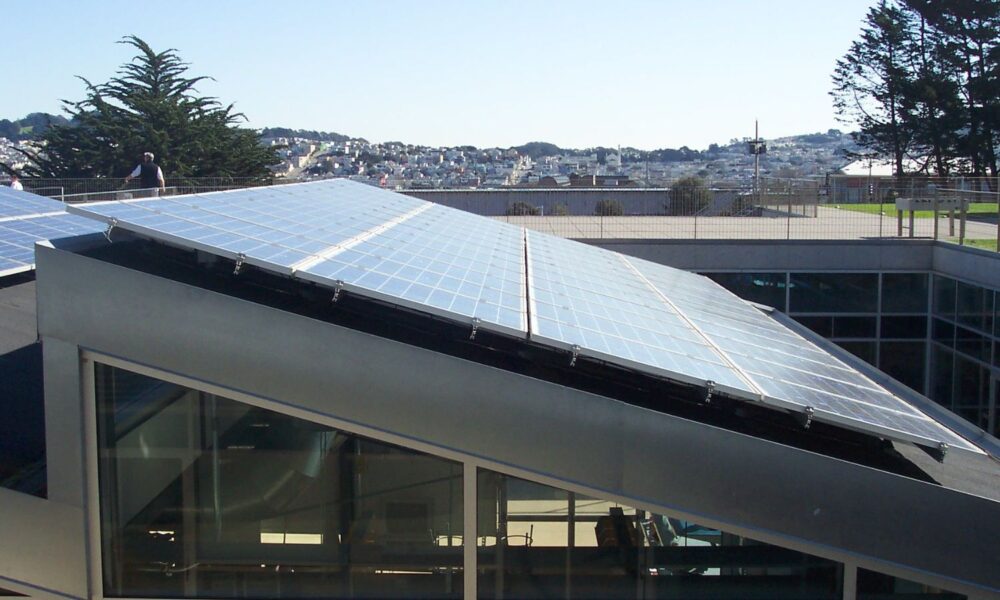From a national perspective, the land use needed to reach our clean energy goals is modest. But for states like California, with large populations, an ambitious and necessary clean energy timeline, and ongoing natural resource issues, where to actually build these projects will require thoughtful planning.
A 2021 report by California state agencies calls for an additional 16,900 megawatts (MW) of utility-scale solar and an additional 12,500 MW of customer solar by 2030, making up 61 percent of new clean electricity resources. Along with solar, storage and wind will see significant growth.

Since solar is projected to be a major contributor to California’s clean energy future (and to keep this post manageable), I’m going to focus on where the state can site its photovoltaic solar resources.
(As a quick aside though, storage will play an important role in supporting California’s solar buildout, helping address curtailment and redirecting the electricity to when it’s more needed.)
Good news: there are still site options
There’s a broad spectrum of photovoltaic solar projects—from a couple of panels on a home to sprawling utility-scale arrays in remote areas. The amount and type of land needed for these projects will inform how California builds out its solar fleet.
As you’ve probably heard many, many times, when it comes to climate solutions and clean energy, there’s no silver bullet. So let’s go through a non-exhaustive buckshot of where California could put all those additional solar panels and what the challenges are to siting them there.
Public lands
Public lands managed by federal agencies account for almost half of California’s land mass. While some of these areas are off limits (e.g. National Parks), about 75 percent of federal public lands could be leased for solar development (e.g. Bureau of Land Management, US Forest Service land). These areas offer an opportunity to build large projects that generate lots of needed electricity and have the added benefit of speeding up the often slow pace of permitting that has burdened many clean energy projects. There are already solar projects operating on California’s public lands and the Bureau of Land Management is looking to update its responsible solar development guidelines on public lands for states in the west.
But our public lands are protected for good reasons. They offer tremendous ecosystem and biodiversity benefits, often have deep ties to indigenous heritage, and are simply beautiful to have in their undeveloped state. The discussion to site renewables on public lands must be informed by conservationists, tribal groups, and local communities most affected by these projects.
Using our public lands for renewable energy projects is an option we should consider with careful deliberation.
Agricultural lands
Agricultural land makes up more than half of California’s private lands. But extreme weather is making it more difficult for many of California’s farmers and farmworkers to continue agriculture as a livelihood. Leasing agricultural land for solar farms is a way to offer farmers an alternative, and often more stable, revenue stream. Repurposing this cropland has the additional benefit of not disturbing new lands for renewable energy and potentially improving local socioenvironmental and public health conditions.
California’s efforts to transition to clean energy must be equity-focused, especially in the agriculture sector where there is already significant socioeconomic inequality. If agricultural land is being repurposed for energy projects, the benefits of these projects, such as job opportunities, need to be directed to the farmworkers and local communities.
When we consider converting agricultural land to solar farms, it is often assumed that the land is no longer useful for other purposes. However, there’s also a hybrid approach of agrivoltaics—the practice of growing crops under solar panels. While still in the relatively early stages, agrivoltaics is an example of how we can use land to address multiple issues. In the case of agrivoltaics, clean energy production could intersect with food production, water conservation, and rural grid resiliency. Neat!
Rooftops
Rooftop solar has been California’s golden child. It can be deployed on new and existing buildings (requiring no additional land), typically reduces utility bills for the occupants, and minimizes transmission needs. Increasingly rooftop solar is being paired with batteries that would support broader grid reliability and also local grid resilience after the sun goes down or during extreme weather events.
Without a doubt, solar on rooftops will play a very big role in California’s clean energy future, but it can’t carry the entire transition. And while decreasing costs of rooftop solar has made it more financially accessible for consumers, there are still many inequalities that exist. For example, low-income households, renters, and multi-family homes face significantly more difficulty accessing rooftop solar.
Rooftop solar has additionally brought up issues, particularly in California, about how to allocate other grid costs like upgrades to transmission lines and wildfire risk mitigation. This is an ongoing discussion that’s above the paygrade of this post, but it’s an important issue for California to figure out, so rooftop solar can become as ubiquitous as it should be.
Local communities
Community solar is a middle ground between large utility-scale projects and distributed solar systems like rooftop solar. These projects allow households and businesses to access clean electricity by receiving credits from the power generated by a local solar project, addressing some of the equity gaps noted in rooftop solar while still supporting local grid resilience. While community solar projects can require additional land, their smaller size provides opportunities to site projects on already disturbed lands.
But California has struggled to craft effective community solar programs, with community solar making up less than one percent of the state’s solar capacity. Renewed policy efforts in the community solar space will hopefully boost participation in these programs and contribute to California’s growing solar fleet.
Canals
Solar panel-covered canals were pioneered in India over a decade ago, but California has just recently piloted the concept for the first time in the US. As many Western States face increasingly high temperatures and severe droughts, covering our canals with solar panels combines clean energy production with water conservation while requiring no additional land. A study at the University of California, Santa Cruz and Merced estimated that covering all of California’s canals (about 4,000 miles) with solar panels could generate 13 GW of power and save 63 billion gallons of water from reduced evaporation annually. That’s enough electricity to power almost two million homes and enough water for the residential needs of more than two million people. On paper, it’s promising! In practice, we’ll be keeping an eye on results from this and other pilot projects.
Parking lots
Parking lot solar canopies and solar along highways are two solutions gaining traction in California and elsewhere. They use the existing built environment, so they don’t need additional land, but they have additional co-benefits. Solar canopies on parking lots tie in nicely with broader clean transportation efforts to electrify our vehicles, coordinating electricity generation to the places where we’re already leaving our vehicles. Highways already have right-of-way permits, allowing these projects to be built more quickly and to generate state revenue. An early highway solar project along the I-85 in Georgia has pollinator-friendly wildflowers growing underneath, another form of agrivoltaics.
Like solar covered canals, these solutions are still relatively nascent in California and across the nation, and there are still issues like higher costs compared to traditional utility-scale solar, local pushback, and transmission connections that need to be figured out. But the growing number of these multi-purpose land use solutions hints at an exciting future where solar energy generation is more thoughtfully incorporated into our built environment.
California’s solar potential is high
There’s so much that could and should be said about each of these solutions and other solutions, but instead I’ll leave you with this: California has one the highest potential among US states for solar capacity. Designing a grid that incorporates a variety of these solutions will improve reliability and local resilience while driving us to a clean energy future. Along the way, there are opportunities to minimize impacts to the land while addressing other social, economic, and natural resource concerns.
There are undoubtedly tradeoffs between these solutions, and solar projects are only part of a much larger network of energy resources, infrastructure, policies, and behavior that will need to evolve for California to reach its clean energy goals. Solar is a critical piece of this puzzle and it’s worth exploring the nuance of how it can be used to help the state achieve a clean, equitable, and reliable grid.
Before I close out the discussion of siting for renewable energy, it’s necessary to acknowledge that the lands discussed here were stolen from indigenous tribes. A conversation about land use should also recognize that there is always the option to return the land back.
The size of the original image used as the feature image for this blog was modified under a CC BY 2.0 license.
An earlier version of this blog post incorrectly stated the potential electricity from covering canals with solar panels.

